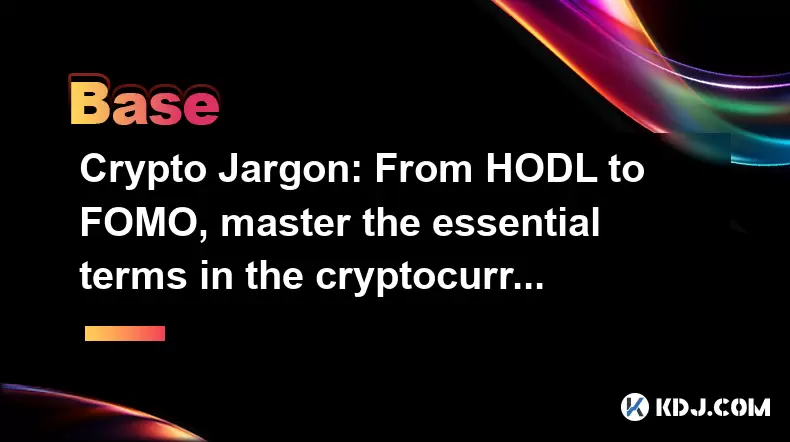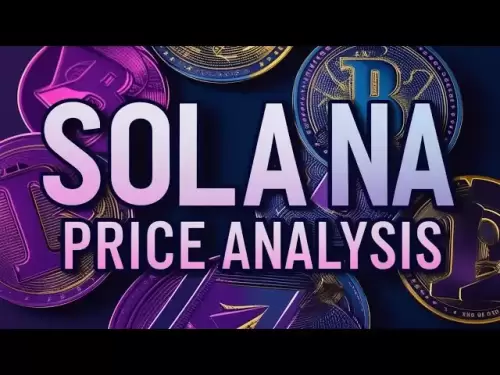-
 Bitcoin
Bitcoin $118300
-0.58% -
 Ethereum
Ethereum $3825
0.11% -
 XRP
XRP $3.137
-0.71% -
 Tether USDt
Tether USDt $0.9999
-0.01% -
 BNB
BNB $803.9
-3.37% -
 Solana
Solana $181.5
-1.94% -
 USDC
USDC $0.9999
0.01% -
 Dogecoin
Dogecoin $0.2238
-2.51% -
 TRON
TRON $0.3358
2.12% -
 Cardano
Cardano $0.7844
-2.16% -
 Hyperliquid
Hyperliquid $43.31
-1.48% -
 Sui
Sui $3.807
-4.04% -
 Stellar
Stellar $0.4203
-1.96% -
 Chainlink
Chainlink $17.79
-3.00% -
 Bitcoin Cash
Bitcoin Cash $567.8
-1.34% -
 Hedera
Hedera $0.2614
-4.30% -
 Avalanche
Avalanche $24.19
-4.46% -
 Litecoin
Litecoin $109.2
-0.74% -
 UNUS SED LEO
UNUS SED LEO $8.969
-0.01% -
 Toncoin
Toncoin $3.404
3.97% -
 Ethena USDe
Ethena USDe $1.001
-0.01% -
 Shiba Inu
Shiba Inu $0.00001307
-3.19% -
 Uniswap
Uniswap $10.33
-1.23% -
 Polkadot
Polkadot $3.884
-4.06% -
 Monero
Monero $312.9
-1.87% -
 Dai
Dai $1.000
0.01% -
 Bitget Token
Bitget Token $4.537
-2.24% -
 Pepe
Pepe $0.00001156
-3.40% -
 Cronos
Cronos $0.1437
-0.89% -
 Aave
Aave $282.8
-2.77%
Crypto Jargon: From HODL to FOMO, master the essential terms in the cryptocurrency world
Understanding crypto jargon like HODL, FOMO, and FUD is crucial for navigating the volatile market and making informed investment decisions.
May 11, 2025 at 10:02 am

Cryptocurrency, a digital or virtual form of currency that uses cryptography for security, has introduced a unique lexicon to the financial world. As the crypto market continues to evolve, understanding its jargon becomes crucial for anyone looking to navigate this space effectively. From terms like HODL to FOMO, this article will guide you through some of the essential terms you need to master in the cryptocurrency world.
HODL: The Art of Holding
HODL, an acronym that originated from a misspelling of "hold," stands for "Hold On for Dear Life." It represents a strategy where investors hold onto their cryptocurrencies despite market volatility. The term gained popularity in a Bitcoin forum post in 2013, where the author, in a moment of frustration, declared their intention to hold their Bitcoin no matter what.
HODL is more than just a strategy; it's a philosophy embraced by many in the crypto community. It reflects a belief in the long-term potential of cryptocurrencies, encouraging investors to weather short-term market fluctuations. When you hear someone say they are HODLing, it means they are committed to their investment for the long haul, often ignoring short-term price movements.
FOMO: The Fear of Missing Out
FOMO, or "Fear Of Missing Out," is a psychological phenomenon that drives investors to make impulsive decisions based on the fear of missing out on potential gains. In the crypto world, FOMO often leads to buying cryptocurrencies at peak prices, driven by the fear that the price will continue to rise without them.
FOMO can be particularly dangerous in the volatile crypto market, where prices can skyrocket and plummet within hours. It's essential for investors to recognize FOMO and manage it effectively. Strategies to combat FOMO include setting clear investment goals, conducting thorough research, and maintaining a disciplined approach to buying and selling.
FUD: Spreading Fear, Uncertainty, and Doubt
FUD, which stands for "Fear, Uncertainty, and Doubt," refers to the spread of negative information or rumors about a cryptocurrency to influence its price negatively. FUD can be spread intentionally by individuals or groups looking to manipulate the market or unintentionally through misinformation.
In the crypto community, FUD is often countered with facts and positive news to stabilize the market. Recognizing FUD is crucial for investors, as it can help them make more informed decisions and avoid panic selling. To combat FUD, it's important to verify information from multiple reliable sources before acting on it.
DYOR: Do Your Own Research
DYOR, or "Do Your Own Research," is a mantra in the cryptocurrency world that emphasizes the importance of personal due diligence. Given the high volatility and potential for misinformation in the crypto market, investors are encouraged to research thoroughly before making any investment decisions.
DYOR involves analyzing a cryptocurrency's technology, team, roadmap, and market potential. It also includes understanding the risks involved and staying updated with the latest news and developments. By doing your own research, you can make more informed decisions and avoid falling prey to FOMO or FUD.
Whale: The Big Players in Crypto
Whale is a term used to describe individuals or entities that hold large amounts of a particular cryptocurrency. These "big players" can significantly influence the market due to their ability to move large volumes of assets.
Whales can impact the market in various ways, such as causing price fluctuations when they buy or sell large amounts of a cryptocurrency. Understanding the movements of whales can provide insights into market trends, but it's important not to base investment decisions solely on their actions. Instead, consider whale movements as one of many factors in your overall analysis.
Airdrop: Free Tokens for the Community
Airdrop refers to the distribution of free tokens or coins to the wallets of active members of a cryptocurrency community. Airdrops are often used by new projects to increase awareness and incentivize participation.
To participate in an airdrop, you typically need to follow these steps:
- Find an Airdrop: Look for announcements on official project websites, social media, or dedicated airdrop platforms.
- Meet the Requirements: Each airdrop may have specific requirements, such as holding a certain amount of another cryptocurrency or completing social media tasks.
- Submit Your Wallet Address: Provide your cryptocurrency wallet address to receive the airdropped tokens.
- Verify Your Participation: Some airdrops require additional verification steps, such as confirming your email or completing a KYC (Know Your Customer) process.
Airdrops can be a great way to get involved with new projects and potentially earn free tokens, but it's important to be cautious and verify the legitimacy of the airdrop to avoid scams.
DEX: Decentralized Exchanges
DEX, or "Decentralized Exchange," is a type of cryptocurrency exchange that operates without a central authority. Unlike centralized exchanges, DEXs allow users to trade directly with each other, often using smart contracts to facilitate transactions.
Using a DEX offers several advantages, including increased privacy and security, as users maintain control over their funds. However, DEXs can also have drawbacks, such as lower liquidity and potentially higher transaction fees. To use a DEX, follow these steps:
- Choose a DEX: Research and select a reputable decentralized exchange that supports the cryptocurrencies you want to trade.
- Connect Your Wallet: Use a compatible cryptocurrency wallet to connect to the DEX. This could be a browser extension wallet like MetaMask or a hardware wallet.
- Add Liquidity or Trade: If you want to provide liquidity, you can add your tokens to a liquidity pool. If you want to trade, you can swap one cryptocurrency for another directly on the platform.
- Confirm Transactions: Review and confirm your transactions, ensuring you understand any associated fees and the current market conditions.
Understanding how to use a DEX can enhance your trading experience and provide more control over your cryptocurrency transactions.
FAQs
Q: What is the difference between a bull market and a bear market in the crypto world?
A: A bull market in the cryptocurrency world refers to a period of rising prices and optimism, where investors are generally buying and holding assets with the expectation of further gains. Conversely, a bear market is characterized by falling prices and pessimism, where investors may be selling off their assets to avoid further losses. Understanding these market conditions can help you make more informed investment decisions.
Q: How can I protect myself from scams in the cryptocurrency space?
A: Protecting yourself from scams in the cryptocurrency space involves several key practices:
- Verify Information: Always verify information from multiple reliable sources before making any investment decisions.
- Use Secure Wallets: Use reputable and secure cryptocurrency wallets to store your assets, and never share your private keys or seed phrases with anyone.
- Be Wary of Promises: Be cautious of projects that promise guaranteed returns or high rewards with little risk, as these are often red flags for scams.
- Educate Yourself: Continuously educate yourself about common scam tactics and stay updated with the latest security practices in the crypto world.
Q: What is the significance of the term "moon" in cryptocurrency?
A: The term "moon" in the cryptocurrency world refers to a significant and rapid increase in the price of a cryptocurrency. When someone says a cryptocurrency is "going to the moon," it means they expect its value to surge dramatically. This term reflects the high hopes and excitement often found in the crypto community about the potential for substantial gains.
Q: How can I stay updated with the latest cryptocurrency news and trends?
A: Staying updated with the latest cryptocurrency news and trends can be achieved through several methods:
- Follow Reputable Sources: Subscribe to newsletters and follow reputable cryptocurrency news websites and blogs.
- Join Online Communities: Participate in online forums and social media groups dedicated to cryptocurrency to stay informed about community discussions and trends.
- Use Crypto Apps: Download cryptocurrency tracking apps that provide real-time news, price alerts, and market analysis.
- Attend Events and Webinars: Engage in cryptocurrency events, webinars, and conferences to learn from experts and stay updated with the latest developments.
Disclaimer:info@kdj.com
The information provided is not trading advice. kdj.com does not assume any responsibility for any investments made based on the information provided in this article. Cryptocurrencies are highly volatile and it is highly recommended that you invest with caution after thorough research!
If you believe that the content used on this website infringes your copyright, please contact us immediately (info@kdj.com) and we will delete it promptly.
- Dalio's Take: Balancing Bitcoin, Gold, and the Debt Doom Loop
- 2025-07-31 00:51:15
- PENGU Price Plunge? Binance Transfers and Token Transfer Trends
- 2025-07-30 23:10:15
- Navigating Crypto Investment: Bitcoin Mining and the Rise of Cloud Mining in the Big Apple
- 2025-07-30 22:31:15
- Meme Coins, Profit, and Investment: Riding the Crypto Wave in Style
- 2025-07-30 23:10:15
- LivLive's Gamified AR Launch Phase: Level Up Your Reality!
- 2025-07-30 22:31:15
- Bitcoin, Crypto, and the Golden Age: Navigating the Future of Digital Assets
- 2025-07-31 00:10:14
Related knowledge

What is the difference between CeFi and DeFi?
Jul 22,2025 at 12:28am
Understanding CeFi and DeFiIn the world of cryptocurrency, CeFi (Centralized Finance) and DeFi (Decentralized Finance) represent two distinct financia...

How to qualify for potential crypto airdrops?
Jul 23,2025 at 06:49am
Understanding What Crypto Airdrops AreCrypto airdrops refer to the distribution of free tokens or coins to a large number of wallet addresses, often u...

What is a crypto "airdrop farmer"?
Jul 24,2025 at 10:22pm
Understanding the Role of a Crypto 'Airdrop Farmer'A crypto 'airdrop farmer' refers to an individual who actively participates in cryptocurrency airdr...

What is the difference between a sidechain and a Layer 2?
Jul 20,2025 at 11:35pm
Understanding the Concept of SidechainsA sidechain is a separate blockchain that runs parallel to the main blockchain, typically the mainnet of a cryp...

What is the Inter-Blockchain Communication Protocol (IBC)?
Jul 19,2025 at 10:43am
Understanding the Inter-Blockchain Communication Protocol (IBC)The Inter-Blockchain Communication Protocol (IBC) is a cross-chain communication protoc...

How does sharding improve scalability?
Jul 20,2025 at 01:21am
Understanding Sharding in BlockchainSharding is a database partitioning technique that is increasingly being adopted in blockchain technology to enhan...

What is the difference between CeFi and DeFi?
Jul 22,2025 at 12:28am
Understanding CeFi and DeFiIn the world of cryptocurrency, CeFi (Centralized Finance) and DeFi (Decentralized Finance) represent two distinct financia...

How to qualify for potential crypto airdrops?
Jul 23,2025 at 06:49am
Understanding What Crypto Airdrops AreCrypto airdrops refer to the distribution of free tokens or coins to a large number of wallet addresses, often u...

What is a crypto "airdrop farmer"?
Jul 24,2025 at 10:22pm
Understanding the Role of a Crypto 'Airdrop Farmer'A crypto 'airdrop farmer' refers to an individual who actively participates in cryptocurrency airdr...

What is the difference between a sidechain and a Layer 2?
Jul 20,2025 at 11:35pm
Understanding the Concept of SidechainsA sidechain is a separate blockchain that runs parallel to the main blockchain, typically the mainnet of a cryp...

What is the Inter-Blockchain Communication Protocol (IBC)?
Jul 19,2025 at 10:43am
Understanding the Inter-Blockchain Communication Protocol (IBC)The Inter-Blockchain Communication Protocol (IBC) is a cross-chain communication protoc...

How does sharding improve scalability?
Jul 20,2025 at 01:21am
Understanding Sharding in BlockchainSharding is a database partitioning technique that is increasingly being adopted in blockchain technology to enhan...
See all articles

























































































